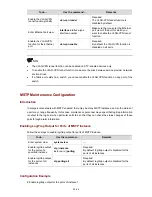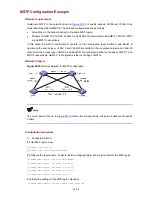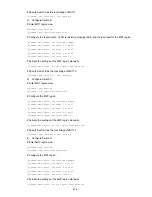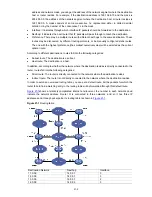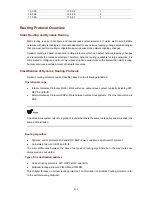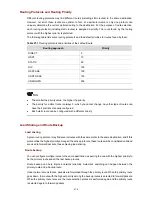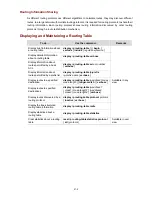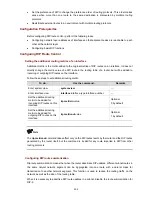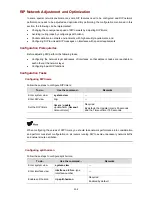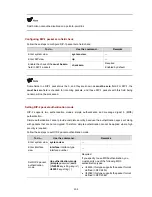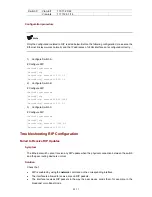
22-4
0 1.1.2.2
ic 1.1.4.0 255.255.255.0 1.1.2.2
.2.2
0 1.1.3.1
ic 1.1.5.0 255.255.255.0 1.1.3.1
.3.1
n Switch B.
dure is omitted.
# Set the default gateway address of Host B to 1.1.4.1. Detailed configuration procedure is omitted.
to 1.1.1.1. Detailed configuration procedure is omitted.
Troubleshooting a Static Route
link
UP, but IP packets cannot be forwarded on the interface.
) Use
the
display ip routing-table protocol static
command to view whether the corresponding
static route is correctly configured.
2) Use
the
display ip routing-table
command to view whether the static route is valid.
# Approach 1: Configure static routes on Switch A.
<SwitchA> system-view
[SwitchA] ip route-static 1.1.3.0 255.255.255.
[SwitchA] ip route-stat
[SwitchA] ip route-static 1.1.5.0 255.255.255.0 1.1
# Approach 2: Configure a static route on Switch A.
<SwitchA> system-view
[SwitchA] ip route-static 0.0.0.0 0.0.0.0 1.1.2.2
# Approach 1: Configure static routes on Switch B.
<SwitchB> system-view
[SwitchB] ip route-static 1.1.2.0 255.255.255.
[SwitchB] ip route-stat
[SwitchB] ip route-static 1.1.1.0 255.255.255.0 1.1
# Approach 2: Configure a static route o
<SwitchB> system-view
[SwitchB] ip route-static 0.0.0.0 0.0.0.0 1.1.3.1
# Configure static routes on Switch C.
<SwitchC> system-view
[SwitchC] ip route-static 1.1.1.0 255.255.255.0 1.1.2.1
[SwitchC] ip route-static 1.1.4.0 255.255.255.0 1.1.3.2
2) Perform the following configurations on the host.
# Set the default gateway address of Host A to 1.1.5.1. Detailed configuration proce
# Set the default gateway address of Host C
Now, all the hosts and switches in the figure can communicate with each other.
Symptom: The switch is not configured with a dynamic routing protocol. Both the physical status and the
layer protocol status of an interface are
Solution: Perform the following procedure.
1

